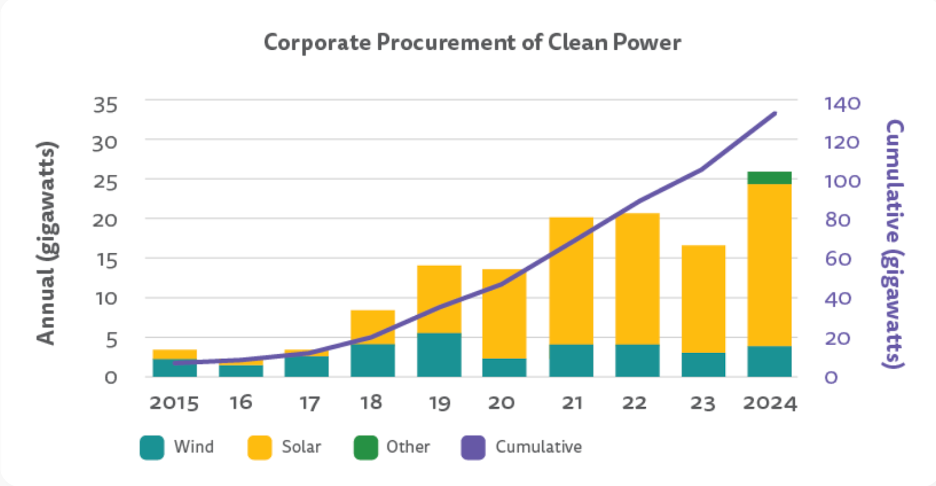In March, Local weather Influence Companions, a long-standing carbon challenge developer, signed a 30-year offtake settlement with Microsoft to ship 1.5 million carbon elimination credit from its Panna challenge, a community-led forest restoration effort in Madhya Pradesh, India. The challenge’s finance construction seems rather a lot like a wind farm, mentioned Local weather Influence Companions CEO Sheri Hickok, who beforehand led Common Electrical’s worldwide windfarm growth.
Hickok thinks borrowing classes from renewable vitality’s speedy development might speed up the enlargement of carbon elimination initiatives. Each incur the majority of their lifetime prices upfront, throughout challenge growth, and repay that funding over years. Buy contracts for each sometimes span many years and sometimes lock in fastened pricing.
These long-term offtakes derisk the upfront funding, establishing the value certainty mandatory for buyers to finance challenge growth with confidence, and concurrently safe patrons entry to the renewable vitality or carbon credit mandatory to fulfill their future local weather commitments.
“Corporates know learn how to do [virtual power purchase agreements] in renewable vitality. We do [carbon purchase agreements] in carbon,” mentioned Hickok. The similarity might give corporations confidence in signing long-term carbon offtake agreements, as a result of it’s a construction they’ve seen earlier than.
12 million new timber
The Panna challenge will restore practically 50,000 acres of cropland and neighborhood lands in central India. The neighborhood will plant practically 12 million native and fruit timber within the area, drawing 3 million tons of carbon dioxide out of the environment over the challenge’s lifespan. Microsoft has already claimed half of those carbon credit; Local weather Influence Companions will promote the remaining half to different patrons sooner or later. It’s Microsoft’s largest carbon elimination buy within the Asia Pacific area thus far, and its first in India.
Terra Pure Capital, an environmental commodities funding firm, is offering the challenge finance in phases, primarily based on milestones that embody planting charges and neighborhood engagement.
The challenge’s strong, two-year pilot, skilled group and demand dedication from Microsoft made it stand out as a robust funding, mentioned Terra Pure Capital Managing Director Eric Vertefeuille. As well as, Kita, a carbon credit score insurance coverage firm, is insuring the Panna challenge towards under- and non-delivery, giving buyers an extra degree of confidence.
Be taught from renewable vitality’s success
The speedy scale up and declining prices of renewable vitality present a roadmap for different local weather know-how deployment at scale. Two components have underpinned the renewable vitality growth over the past three many years, based on a 2024 report from Terra Pure Capital:
- Authorities insurance policies, akin to subsidies and tax credit, spurred demand and decreased danger.
- Company demand indicators supplied long-term worth certainty.
These components made renewable vitality challenge returns extra predictable, opening the door for monetary establishments to take a position and get initiatives off the bottom. And with the rising discipline expertise, know-how prices have steadily declined, making renewable vitality a extra enticing funding to patrons and making a optimistic suggestions loop, resulting in a gradual enhance in deployments.

Supply: The Enterprise Council for Sustainable Vitality, right here
Carbon elimination can observe an identical path. “Carbon pricing is serving the identical function as authorities coverage did for renewable vitality,” mentioned Hickok, with long-term offtakes akin to Microsoft’s contract with the Panna challenge offering the value certainty vital for personal capital to dive in.
Though renewable vitality is seeing file development yr over yr, its path wasn’t all the time easy. Early on, reliability considerations and demand uncertainty made many buyers hesitant to commit massive sums. As soon as the market accelerated, early buyers gained aggressive benefit.
Carbon elimination is now dealing with most of the identical uncertainties. However early movers are poised to reap the identical advantages as those that acted early on renewable vitality buying.
“We’re working to exhibit actual returns, infrastructure-type returns, on long-term carbon growth,” mentioned Hickok. “Now we have to get finance flowing into the carbon markets to scale, to construct out the potential within the trade.”
The place carbon initiatives should blaze their very own path
To make sure, carbon elimination presents distinctive challenges. For one, nature-based carbon elimination operates on nature’s timelines: It could take 5 to 10 years earlier than a challenge constantly delivers a stream of carbon elimination credit. That’s barely longer than typical return timelines from a wind or photo voltaic farm, making affected person capital and long-term offtakes much more vital for the carbon sector.
Though patrons and buyers keen to take a protracted view with carbon offtakes are nonetheless in brief provide, that long-term dedication additionally makes carbon initiatives notably impactful to native communities, providing “long-term employment and a transformative view for implementation companions when it comes to how they view the enterprise fashions,” mentioned Ben Gatley, Local weather Influence Companions’ head of business challenge growth. Consequently, “they will make fairly totally different choices round how they run their group.”
Local weather Influence Companions estimates that farmers concerned with the Panna challenge will double their incomes over the funding timeframe from fruit tree yields and carbon funds.
The following step: standardizing finance
The following step to scale the carbon elimination trade is to standardize finance buildings, based on Vertefeuille. “All challenge finance into massive infrastructure initiatives seems and smells the identical. It took a very long time to get there,” she mentioned. Getting there took follow to determine repeatable playbooks.
“The primary movers in renewables had their selection of initiatives previous to the rise in demand that restricted choices afterward,” mentioned Hickok. “This is identical outlook for carbon.”